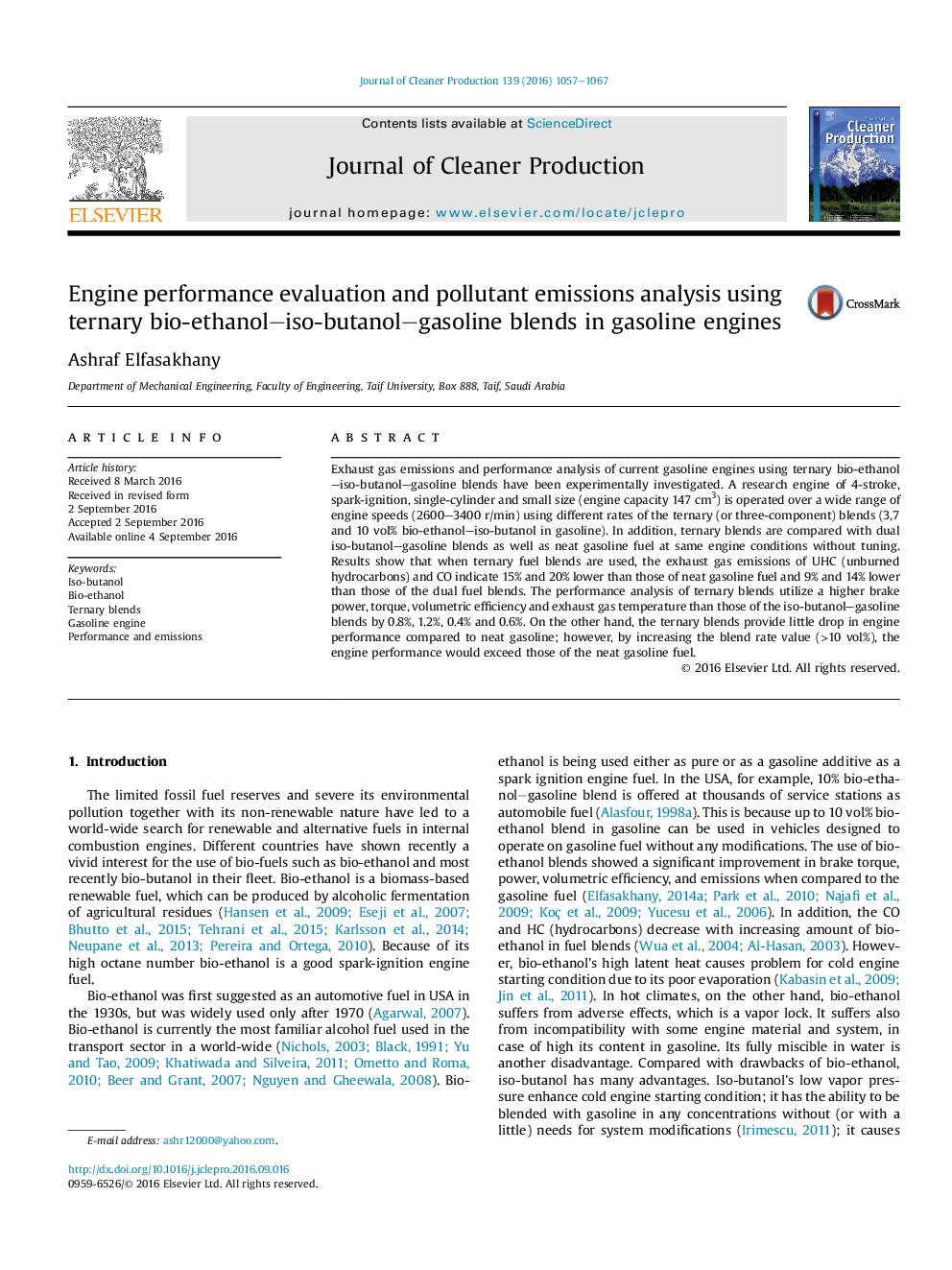| Article ID | Journal | Published Year | Pages | File Type |
|---|---|---|---|---|
| 8100731 | Journal of Cleaner Production | 2016 | 11 Pages |
Abstract
Exhaust gas emissions and performance analysis of current gasoline engines using ternary bio-ethanol-iso-butanol-gasoline blends have been experimentally investigated. A research engine of 4-stroke, spark-ignition, single-cylinder and small size (engine capacity 147Â cm3) is operated over a wide range of engine speeds (2600-3400 r/min) using different rates of the ternary (or three-component) blends (3,7 and 10Â vol% bio-ethanol-iso-butanol in gasoline). In addition, ternary blends are compared with dual iso-butanol-gasoline blends as well as neat gasoline fuel at same engine conditions without tuning. Results show that when ternary fuel blends are used, the exhaust gas emissions of UHC (unburned hydrocarbons) and CO indicate 15% and 20% lower than those of neat gasoline fuel and 9% and 14% lower than those of the dual fuel blends. The performance analysis of ternary blends utilize a higher brake power, torque, volumetric efficiency and exhaust gas temperature than those of the iso-butanol-gasoline blends by 0.8%, 1.2%, 0.4% and 0.6%. On the other hand, the ternary blends provide little drop in engine performance compared to neat gasoline; however, by increasing the blend rate value (>10Â vol%), the engine performance would exceed those of the neat gasoline fuel.
Related Topics
Physical Sciences and Engineering
Energy
Renewable Energy, Sustainability and the Environment
Authors
Ashraf Elfasakhany,
